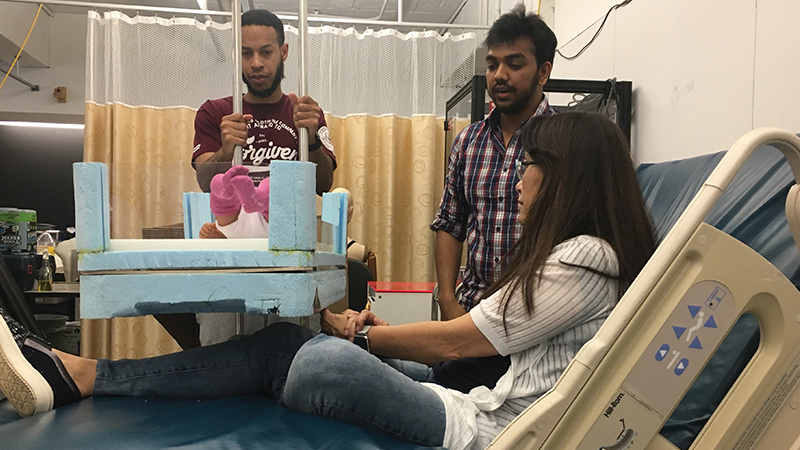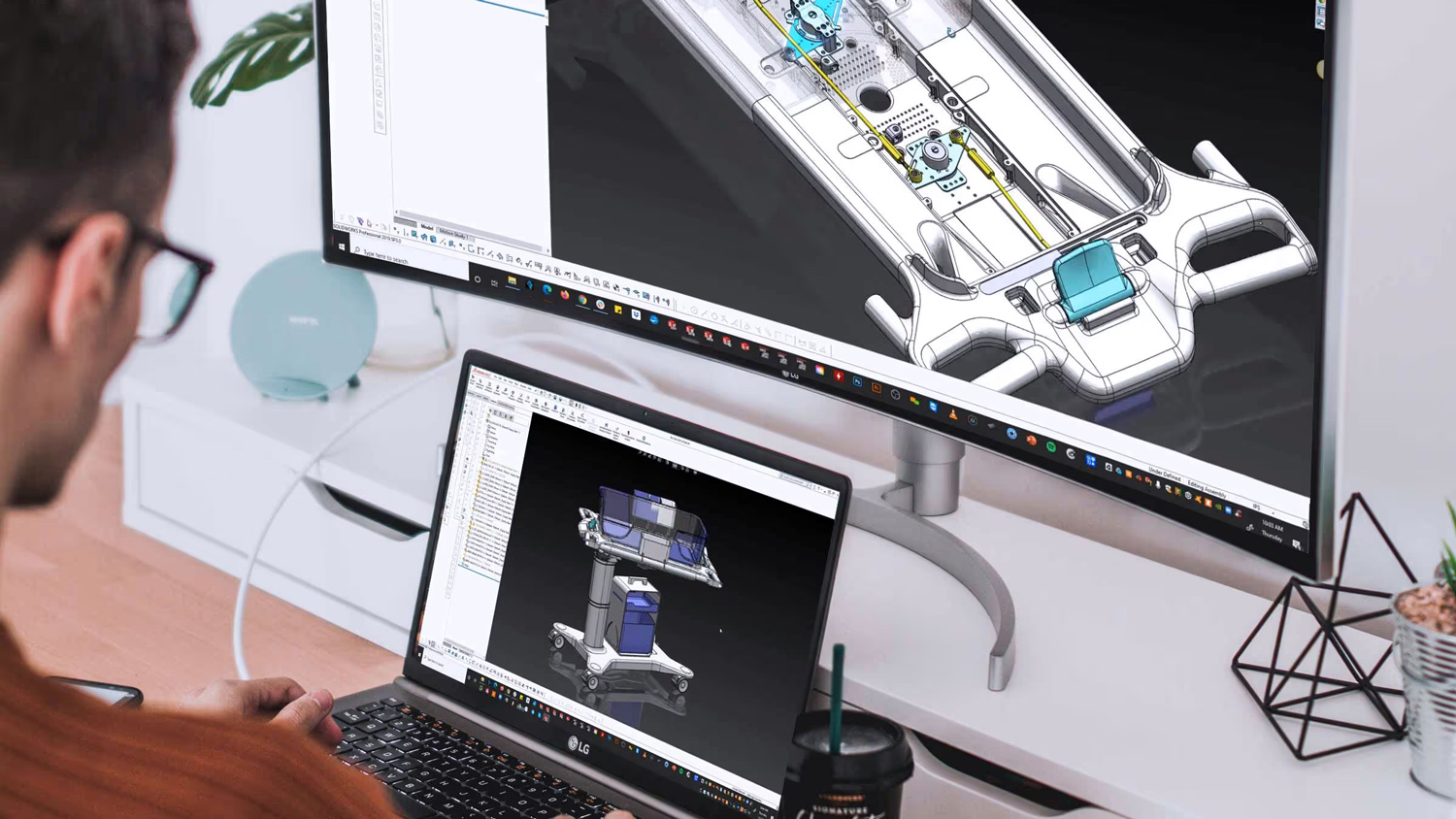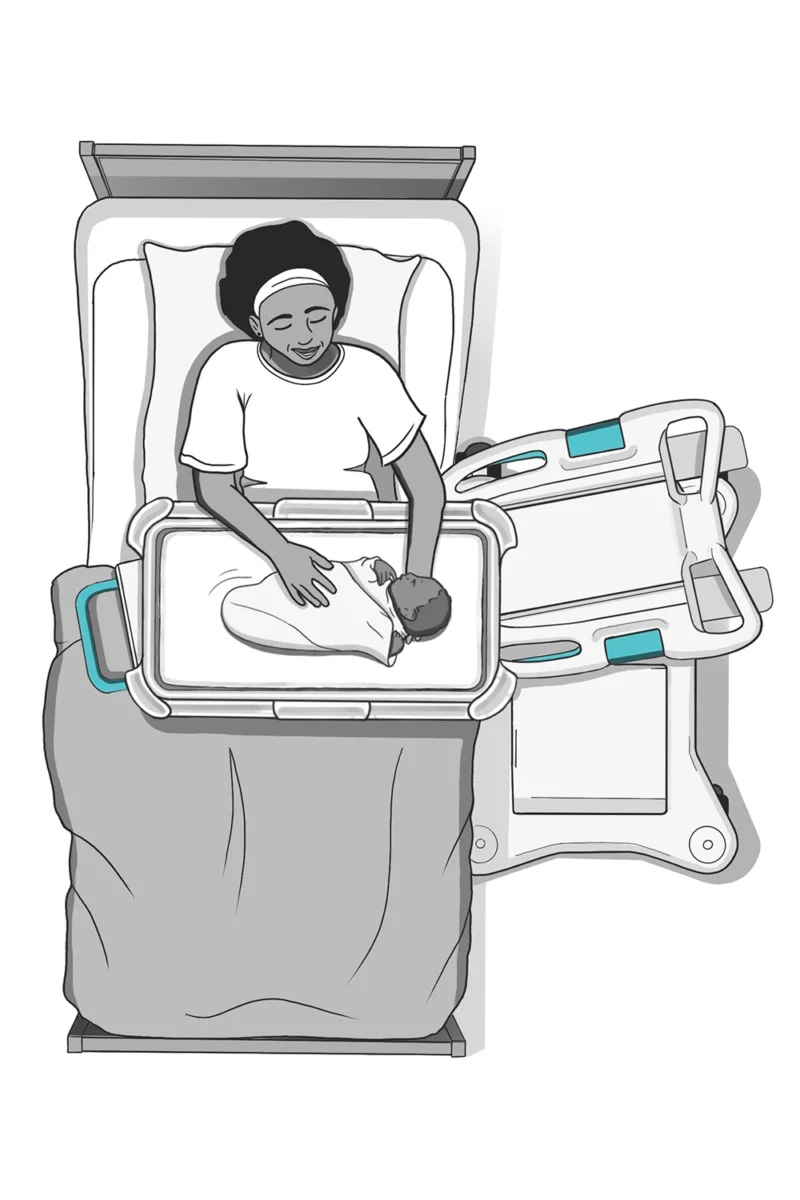Rooted at NC State: Red Dot Design Award Winner Showcases Research-Design-Industry Partnership

Mother-infant connection. That was the basis of the project Kristin Tully, Ph.D., associate professor in the Department of Obstetrics and Gynecology at UNC-Chapel Hill, brought to the NC State College of Design. As a medical anthropologist, she researched that mothers who had experienced cesarean surgery to give birth had a hard time reaching their babies. The process for getting their infants out of the bassinet and setting them back down was challenging, given the structure of hospital rooms. And the built environment of postnatal units created unnecessary barriers for safe, supportive care and for all new families.
From Research to Design: Turning Insight into Action
Tully brought this design problem into the classroom, partnering with Sharon Joines’ industrial design studio to explore ways to design a better bassinet system, one that accommodated the needs of the mother-infant “couplet.” Through a sponsored studio with UNC, industrial design students were able to visit UNC Medical Center, observing and talking to stakeholders throughout the project – not only mothers, but their family members, nurses, lactation consultants, midwives, and doctors.
“The depth of the student’s research really stood out,” says Kelly Umstead, associate professor of industrial design and director of graduate programs. “The students identified nuanced insights about postpartum experiences and translated those insights into compelling solutions.” Umstead, along with her research partner Carolina Gill, professor of industrial design, was brought in for studio critiques.


Designing the Couplet Care Bassinet
Following the studio, the project moved into design and prototyping with Trig, an industrial design firm based in Chapel Hill. Ty Hagler [MBA ‘11], principal at Trig, embraced the students’ ideas and incorporated those concepts into the final designs. “Ty read that work, embraced it and used it,” Umstead adds.
Trig partnered with the UNC spin-out Couplet Care, Inc., founded by Tully, to design the over-bed hospital bassinet, enabling mothers to independently access their infants after childbirth. The resulting product has won four international design awards, including a Red Dot Design Award, and is now being purchased and integrated into U.S. hospitals under the leadership of CEO Stacie McEntyre.
Collaboration Between Academia and Industry
“It was a unique project from the beginning,” said Sharon Joines, Ph.D., professor of industrial design and associate dean of academic strategy at the College of Design. “There were great ideas that came out of the studio across the class, as well as the design research that the class generated. Trig embraced the research and incorporated it into their work [with UNC and Couplet Care],” she said.




“Dr. Joines helped create an academic environment where collaboration between design students, industry and research was structured for real impact. Her students gained a world-class education in front-end design strategy, and several went on to be named inventors on the patents or to participate as interns in early development work,” said Hagler.
A Continuing Legacy of Innovation and Impact
Even after the project left the studio, students and alumni from the College of Design continued to have a hand in its creation. Brian Himelright [MID ‘17], senior industrial designer, was part of the concepting at Trig, as were Patrick Murphy [BID ‘09], Prasad Joshi [MID ‘18] and Kahren Kersten [MID ‘20]. Murphy served as an industrial designer, prototype manager and lead engineer, blending industrial design with intricate mechanical solutions. Joshi and Charity Kirk [MID ‘18] were part of the patent team for their work on the project.
Bringing a medical device to market can be a long process, and after years of refining prototypes and research with NIH funding, the Couplet Care Bassinet came to market in 2024.
Designing with Purpose: Improving Maternal Health
“What’s interesting about this partnership is that the concept didn’t come from a company or corporation. It came from people [Tully and colleagues] with passion and expertise about maternity care. They were looking for the best concepts and the best way to serve their population and that is why the design is so strong,” said Umstead.

It’s a reflection of the mission of NC State and the UNC System: serving the people of North Carolina through the think and do spirit. The studio involved building, making and hands-on, experimental inquiries that helped guide the final concepts.
“This has been a labor of love for the Trig team,” Hagler added. “Women’s health and pediatrics are chronically underfunded and need sustained support to bring great solutions to vulnerable populations. The leadership team at Couplet Care has shown unwavering commitment to their North Star of safely connecting parents and newborns. It has been incredible to see how much impact the industrial design process can have on a patient-centered mission.”
The Power of Research-Driven, Human-Centered Design
When Joines first came to the college, she brought her approach to research-driven design. This studio helped solidify how valuable that underlying work is. “It’s not just that the product went to market…it went to market and it won a Red Dot Award. Because of that perseverance, of continuing to refine and work on the process and be informed by different stakeholders,” Joines said.
“Good design strategy is rarely visible because so much attention goes to downstream commercial outputs, but Dr. Joines’ work provided foundational direction for Couplet Care that deserves special recognition,” Hagler added. Tully echoed the gratitude for both the Couplet Care Bassinet and the additional productive human-centered design relationships she has subsequently enjoyed with Umstead and Gill. “Meaningful partnerships are special in every way, including enhancing people’s lives in measurable ways,” Tully said.

A Partnership That Continues to Grow
Umstead and Gill were introduced to Tully through the studio, which benefited their own research into maternal health. This initial connection grew into a partnership with UNC and a $2.5 million grant to advance safety in the postnatal unit.
Joines joined this field because she wanted to make people’s lives better. The root of this project was to improve mother-baby experiences in the hospital. To have a product with the chance to improve quality care win a widely-renowned award solidifies the value that good design can bring to everyday lives.
“It was a great collaboration, and it’s an example of how if you bring others into the experience, it grows for everybody,” Joines said. “It’s really special to think this project had its roots at NC State.”


